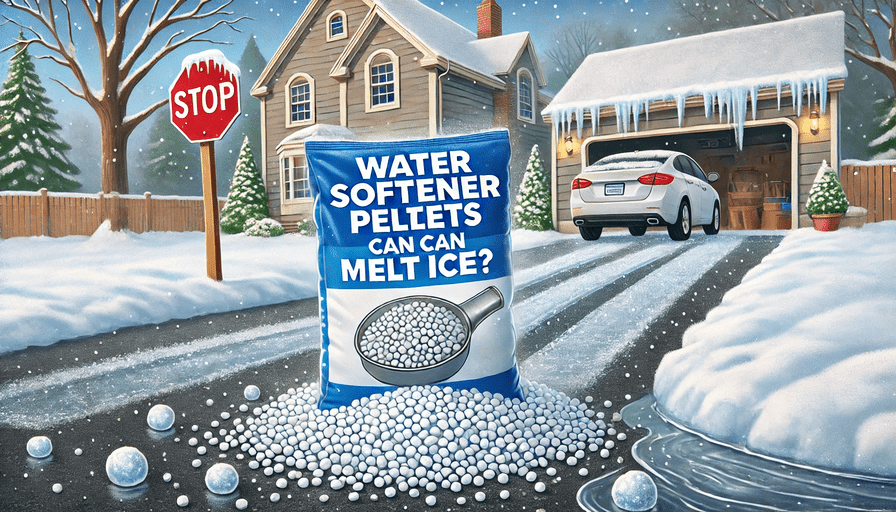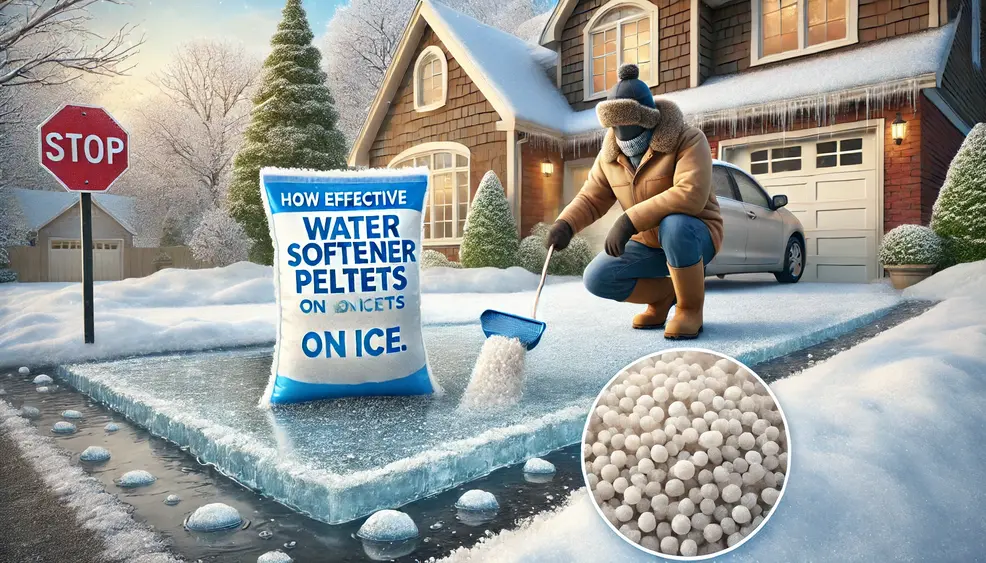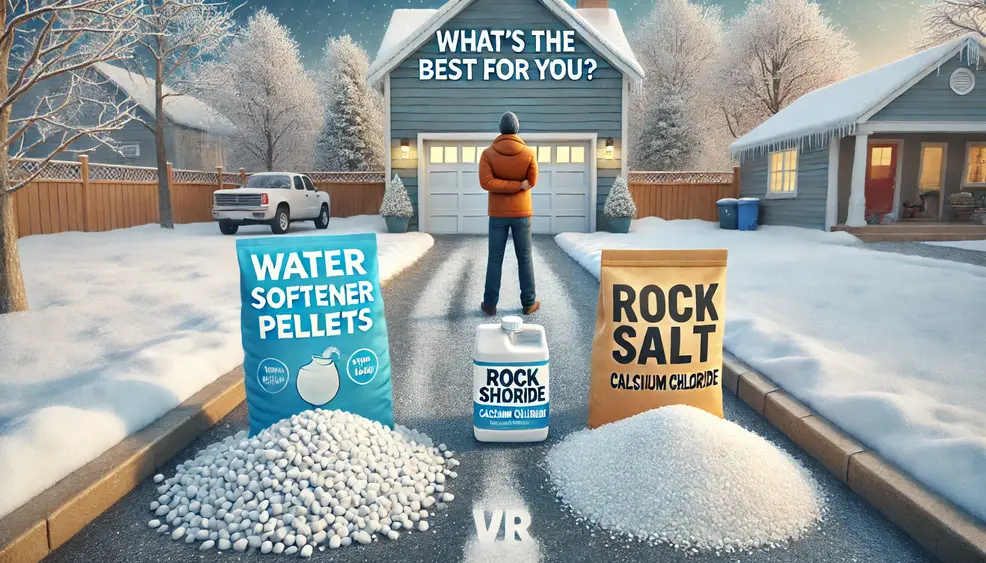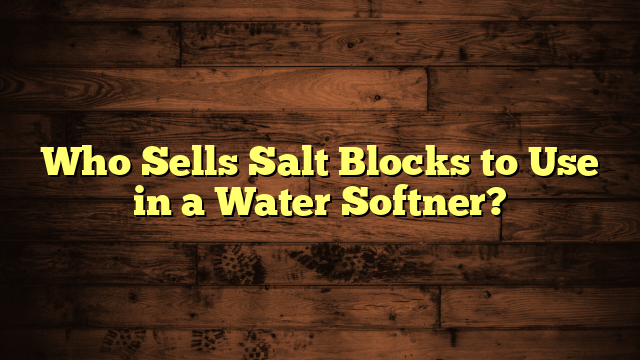Water Softener Salt for Ice Melt? What You Need to Know
Water softener pellets are commonly used to treat hard water, but can they double as an ice melt solution during winter? Many homeowners wonder, “Will water softener salt melt ice?” or “Can I use water softener salt on my driveway?”
This guide provides an in-depth analysis, comparing water softener salt to traditional de-icing methods and helping you determine the best solution for your winter needs.
What Are Water Softener Pellets?
Water softener pellets are primarily composed of sodium chloride (salt) or potassium chloride. Their primary function is to regenerate water softeners by removing hardness minerals like calcium and magnesium from water. These pellets dissolve slowly within water softening systems, maintaining their effectiveness over time.
Since they contain salt, they have the potential to melt ice by lowering the freezing point of water. However, their efficiency in de-icing differs from traditional solutions due to variations in size, shape, and dissolution rate.
Can Water Softener Pellets Be Used as Ice Melt?

Yes, water softener pellets can melt ice, but they come with limitations. Unlike traditional de-icing solutions like rock salt, their large and smooth shape makes them dissolve slower, delaying the melting process.
When Are Water Softener Pellets Effective for Melting Ice?
- Light Ice Accumulation: They can handle small amounts of ice on steps, sidewalks, and small driveways.
- Temperatures Above 20°F (-6°C): They work best in milder winter conditions.
- Emergency Situations: If you run out of traditional de-icers, water softener salt can serve as a temporary alternative.
However, for heavy icing or extremely cold conditions, investing in a specialized de-icer such as rock salt or calcium chloride is a better choice.
How Do Water Softener Pellets Melt Ice?
Salt-based de-icers work through freezing point depression. Normally, water freezes at 32°F (0°C), but when salt is added, it lowers the freezing point, breaking up the ice and turning it into slush.
Since water softener pellets are larger and dissolve more slowly, they take longer to work than traditional ice melt products. They are most effective in temperatures above 20°F (-6°C) and may not perform well in extreme cold.
Effectiveness of Water Softener Pellets vs. Traditional Ice Melt Products

| De-Icing Product | Effectiveness | Best Temperature Range | Use Case |
|---|---|---|---|
| Water Softener Pellets | Moderate | Above 20°F (-6°C) | Small areas, light ice |
| Rock Salt (Sodium Chloride) | High | Above 15°F (-9°C) | Driveways, sidewalks |
| Calcium Chloride | Very High | As low as -25°F (-32°C) | Extreme cold, heavy ice |
| Magnesium Chloride | High | As low as 0°F (-18°C) | Safer for vegetation |
Water softener pellets are a moderate solution for ice melting but fall short compared to rock salt and calcium chloride, which work faster and at lower temperatures.
Water Softener Salt vs. Rock Salt: What’s the Difference?
| Feature | Water Softener Pellets | Rock Salt |
| Composition | Purified sodium or potassium chloride | Coarse sodium chloride |
| Dissolution Rate | Slow | Fast |
| Melting Speed | Moderate | Fast |
| Lowest Effective Temperature | 20°F (-6°C) | 15°F (-9°C) |
| Cost Per Pound | $0.40–$0.50 | $0.10–$0.15 |
| Best Use Case | Water softening, small ice areas | Large areas, de-icing |
Water softener pellets are smoother and dissolve slower, making them less effective than rock salt for de-icing driveways and sidewalks.
Can You Use Water Softener Salt on a Driveway?
Yes, but with caution. Over time, salt can cause damage to concrete surfaces through a process called scaling and spalling, especially if the surface isn’t sealed. If you plan to use water softener pellets for de-icing, consider these tips:
- Apply Sparingly: Excessive salt can erode concrete and leave residue.
- Seal Your Driveway: A sealed driveway resists salt damage better.
- Use for Small Areas: Stick to steps and walkways instead of large-scale de-icing.
Can Water Softener Salt Be Used for Snow Removal?
Water softener salt can assist in breaking up ice beneath snow, but it is not effective for heavy snow removal. For best results:
- Shovel Snow First: Remove excess snow before applying salt.
- Use Water Softener Pellets for Prevention: Apply them before snowfall to reduce ice formation.
- Consider Mixing with Sand: Adding sand provides traction on icy surfaces.
Eco-Friendly Alternatives to Salt for Ice Melt
If you’re concerned about environmental impact, consider the following options:
- Sand: Improves traction but doesn’t melt ice.
- Kitty Litter: Provides grip on icy surfaces.
- Beet Juice & Brine Solutions: Lower freezing points with less environmental damage.
Using water softener salt sparingly along with these alternatives can help reduce ecological impact while maintaining safety.
Conclusion: Should You Use Water Softener Pellets for Ice Melt?
Water softener pellets can melt ice, but they are not the best option compared to rock salt or calcium chloride. They work best in mild winter conditions (above 20°F) and for small areas like steps and walkways. For larger spaces, heavy ice, or extreme cold, specialized ice melt products are more effective.
Best Solution for Your Needs:

✅ Use water softener pellets for occasional, light ice removal.
✅ Choose rock salt or calcium chloride for frequent or heavy-duty de-icing.
✅ Consider eco-friendly alternatives like sand for safer, sustainable solutions.
By understanding the strengths and weaknesses of water softener pellets, you can make an informed decision for winter safety and efficiency.
Frequently Asked Questions
Will water softener pellets melt ice?
Yes, but they work slower than traditional ice melts.
Can you use water softener salt on a driveway?
Yes, but use it sparingly to avoid long-term concrete damage.
Does water softener salt work as well as rock salt?
No, rock salt melts ice faster and at lower temperatures.
Are there alternatives to salt for melting ice?
Yes, eco-friendly options like sand and brine solutions can provide traction and prevent ice buildup.






